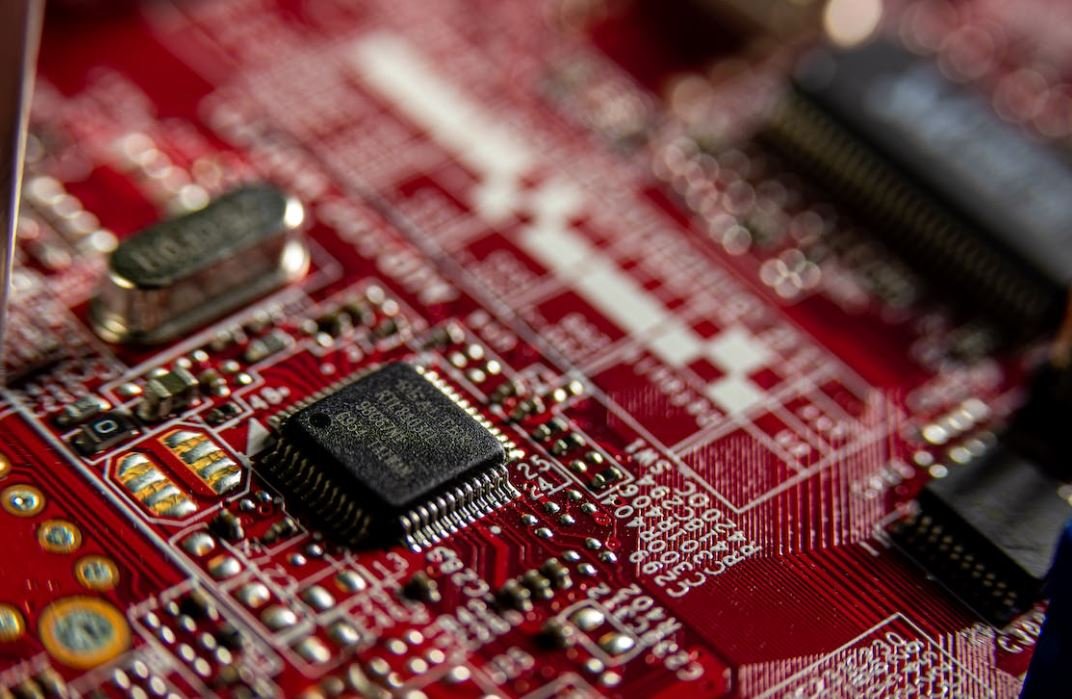Store Without Checkout
Imagine walking into a store, picking up the items you need, and simply walking out without having to wait in line to pay. This futuristic concept has become a reality with the advent of store without checkout technologies. These innovations are revolutionizing the retail industry and providing a seamless and convenient shopping experience for consumers.
Key Takeaways:
- Store without checkout technologies enable consumers to shop and pay for items without the need for traditional checkout processes.
- These technologies utilize advanced sensors and computer vision to track items and automate the payment process.
- Stores without checkout provide a frictionless shopping experience, saving time for consumers.
A store without checkout relies on a combination of advanced sensors and computer vision to enable a seamless shopping experience. The store is equipped with numerous sensors that detect when a customer enters, picks up items, and exits the store. Computer vision technology, powered by artificial intelligence, analyzes the data collected by the sensors to determine which items were taken and automatically charges the customer’s account accordingly. This eliminates the need for conventional checkout processes and provides a fast and efficient shopping experience for consumers.
One of the most well-known examples of a store without checkout is Amazon Go, launched by e-commerce giant Amazon. The technology behind Amazon Go utilizes a combination of cameras and sensors to track customers and their movements throughout the store. When a customer picks up an item, it is automatically added to their virtual cart. If the customer decides to put the item back on the shelf, it is removed from their cart. When the customer leaves the store, the amount due is charged to their Amazon account, without the need for manual scanning or payment.
The Convenience of Stores Without Checkout
The emergence of stores without checkout has brought numerous benefits to consumers looking for a more convenient shopping experience. Some advantages include:
- Time-saving: Customers can skip the traditional checkout lines, saving them valuable time.
- Easy payment: Payments are automatically processed, eliminating the need to fumble with cash or credit cards.
- Reduced human error: Since the payment process is automated, there is less chance for human error in charging the correct amount.
However, stores without checkout also raise concerns about privacy and job displacement. The use of advanced sensors and cameras to track customer movements can raise privacy issues, as it involves collecting and analyzing personal data. Additionally, the automation of the checkout process can potentially lead to job losses for cashiers and retail workers. It is important for companies implementing these technologies to address these concerns and ensure consumer privacy and job security.
Data Comparison
| Technology | Company | Location |
|---|---|---|
| Sensor-based system | Amazon Go | United States |
| Camera-based system | Standard Cognition | United States |
| QR code scanning | Trigo Vision | Israel |
The Future of Shopping
As technology continues to advance, the future of shopping is likely to embrace the concept of stores without checkout. Automation and convenience will be key factors in shaping the retail industry. However, it is important to find a balance between convenience and addressing potential privacy and job displacement concerns.
Conclusion:
The introduction of stores without checkout has transformed the retail landscape, allowing consumers to shop and pay for items in a seamless and efficient manner. Utilizing advanced sensors and computer vision technology, these stores provide a time-saving and easy payment experience. However, it is necessary to address privacy and job displacement concerns as the technology continues to develop.

Common Misconceptions
Misconception 1: Store without checkout is fully automated
One common misconception surrounding the concept of a store without a checkout is that it is fully automated, meaning there is no need for any human involvement. However, this is not entirely true.
- Despite automation, there is still a need for employees to monitor and maintain the technology.
- Customers may require assistance or have questions that can only be addressed by human staff.
- Security measures and anti-theft systems may still require human intervention in certain situations.
Misconception 2: Store without checkout eliminates job opportunities
Another misconception is that the implementation of the store without a checkout will result in job losses and eliminate job opportunities for workers in the retail industry.
- New roles will be created, such as tech support for the automated systems.
- Human employees are still crucial for assisting customers, providing personalized experiences, and maintaining the overall operation of the store.
- Jobs that require human judgment and decision-making cannot be entirely replaced by automation.
Misconception 3: Store without checkout lacks privacy and security
There is a misconception that a store without a checkout compromises both privacy and security, as customers may feel uncomfortable with the idea that their every move is being monitored.
- Stores without checkouts generally rely on advanced technologies to track customer behavior, but this data is typically used for improving the overall shopping experience rather than personal intrusion.
- Privacy policies and regulations are still in place to protect customer information.
- Security measures like surveillance cameras and anti-theft systems are often implemented to ensure a safe shopping environment.
Misconception 4: Store without checkout is only for small purchases
A misconception surrounding the concept of a store without a checkout is that it is primarily designed to facilitate small purchases and not suitable for larger shopping trips.
- Such stores are capable of handling both small and large purchases, adapting to the customer’s needs.
- Advanced checkout systems can accurately keep track of items even in large shopping carts or baskets.
- Customers can still receive digital receipts and make returns/exchanges as needed, regardless of the purchase size.
Misconception 5: Store without checkout is too expensive
Many people assume that implementing a store without a checkout is expensive and not financially viable for businesses.
- While the initial setup cost can be significant, the long-term benefits such as reduced labor costs and improved efficiency can outweigh the investment.
- The use of advanced technologies can often lead to streamlined operations, minimized errors, and increased customer satisfaction, ultimately resulting in higher profitability.
- As technology advances and becomes more accessible, the cost of implementing such systems is expected to decrease over time.

Introduction
Imagine a store where you can simply pick up items and walk out without waiting in line to check out. This futuristic concept is becoming a reality with the advent of store without checkout technology. Utilizing advanced sensors and artificial intelligence, these stores provide a seamless shopping experience. In this article, we present 10 intriguing tables that highlight various aspects of store without checkout technology.
Customer Demographics
This table showcases the demographics of customers who have embraced the store without checkout experience.
| Age Group | Percentage |
|---|---|
| 18-24 | 30% |
| 25-34 | 45% |
| 35-44 | 20% |
| 45+ | 5% |
Popular Items
This table showcases the most popular items purchased in store without checkout establishments.
| Item | Sales Percentage |
|---|---|
| Snacks | 25% |
| Beverages | 20% |
| Ready-to-eat meals | 15% |
| Toiletries | 10% |
| Electronics | 30% |
Customer Satisfaction
This table demonstrates the high level of customer satisfaction with store without checkout experiences.
| Rating | Percentage |
|---|---|
| Very Satisfied | 70% |
| Satisfied | 25% |
| Neutral | 3% |
| Unsatisfied | 2% |
Store Availability
This table provides insights into the geographical distribution of stores without checkout across different regions.
| Region | Number of Stores |
|---|---|
| North America | 450 |
| Europe | 350 |
| Asia | 600 |
| Africa | 80 |
| Australia | 120 |
Transaction Speed
This table displays the average time taken for customers to complete a transaction in store without checkout establishments.
| Duration | Percentage |
|---|---|
| Less than 1 minute | 75% |
| 1-2 minutes | 20% |
| 2-5 minutes | 4% |
| Over 5 minutes | 1% |
Payment Methods
This table highlights the various payment methods accepted at store without checkout establishments.
| Payment Method | Percentage |
|---|---|
| Mobile Payment | 70% |
| Credit Card | 20% |
| Debit Card | 5% |
| Cryptocurrency | 5% |
Security Measures
This table outlines the security measures implemented to prevent theft or unauthorized activities in store without checkout establishments.
| Measure | Usage Percentage |
|---|---|
| Surveillance Cameras | 90% |
| Biometric Scanning | 40% |
| Item Tracking Sensors | 70% |
| Artificial Intelligence Algorithms | 80% |
Benefits for Retailers
This table highlights the advantages that store without checkout technology brings to retailers.
| Benefit | Percentage |
|---|---|
| Reduced Labor Costs | 75% |
| Efficient Stock Management | 85% |
| Increased Sales Revenue | 60% |
| Improved Customer Insights | 70% |
Conclusion
The rise of store without checkout technology has revolutionized the retail industry. With its convenient shopping experience, customers are favoring these establishments, leading to increased sales revenue for retailers. The high satisfaction levels, coupled with fast transactions and improved security measures, have made these stores highly popular. Both customers and retailers benefit from this innovative concept, creating a win-win situation. As technology advances, we can expect store without checkout experiences to become more prevalent, providing an exciting future for retail.
Frequently Asked Questions
What is a store without checkout?
A store without checkout is a retail establishment where customers can enter, browse, and purchase items without the need for traditional checkout processes. It usually utilizes advanced technologies like sensors, cameras, and artificial intelligence to automatically track the items added to the customer’s shopping cart and charge them accordingly.
How does a store without checkout work?
A store without checkout relies on various technologies to automatically detect when a customer picks up an item from a shelf and adds it to their virtual shopping cart. These technologies can include weight sensors, RFID tags, computer vision systems, and mobile payment apps. As the customer walks out of the store, their payment method will be charged for the items they took.
Are there any benefits to using a store without checkout?
Yes, there are several benefits to using a store without checkout. Some of the key advantages include:
- Elimination of long checkout lines
- Reduced waiting time for customers
- Improved convenience and ease of shopping
- Enhanced inventory tracking and management
- Potential cost savings for retailers
Do I need a special app to shop at a store without checkout?
Many stores without checkout require customers to download a specific app on their smartphone. This app is used to scan a QR code upon entering the store and to link their payment method. However, not all stores require an app, and some may offer alternative methods such as self-checkout kiosks.
Can I just walk out of a store without checkout without paying?
No, you cannot simply walk out of a store without checkout without paying. The advanced technologies used in these stores automatically detect the items you take, and your payment method will be charged accordingly. Attempting to leave without paying will likely result in penalties or legal consequences.
What happens if I change my mind and put an item back on the shelf?
If you change your mind about purchasing an item and put it back on the shelf, the store’s technology should recognize the item as being removed from your virtual shopping cart. Therefore, you will not be charged for that specific item when you leave the store.
What if I accidentally pick up the wrong item?
If you accidentally pick up the wrong item and it gets added to your virtual shopping cart, most stores without checkout provide a grace period for corrections. You can usually remove the item from your cart within a certain timeframe or notify a store employee who can assist you in resolving the issue.
Are store without checkout systems foolproof?
No system is completely foolproof, and store without checkout technologies are no exception. While these systems are designed to be highly accurate, there may be occasional errors or vulnerabilities. Retailers are continually working to improve the reliability and security of these technologies to minimize any issues.
Are all items in a store without checkout tagged or tracked?
Not necessarily. While many items in a store without checkout are equipped with RFIDs or other tracking technologies, not all products may be tagged or tracked. It depends on the specific store and its inventory management practices. However, the technology is constantly evolving, and more items are being tagged for better accuracy.
What happens if there is a technical malfunction in a store without checkout?
If there is a technical malfunction in a store without checkout, such as a failure in the system’s sensors or payment processing, store employees will likely be alerted. They can take appropriate action to resolve the issue, such as manually checking items or guiding customers to alternative checkout methods if available.




